
The National War Fund was the joint financing of war appeals during World War II for the United Service Organizations (USO), United Seamen's Service, and about twenty other overseas relief programs. The National War Fund operated from 1943 to 1947.

The National War Fund was the joint financing of war appeals during World War II for the United Service Organizations (USO), United Seamen's Service, and about twenty other overseas relief programs. The National War Fund operated from 1943 to 1947.
Beginning in September 1939 when Germany attacked Poland, 596 foreign relief agencies raised $597,621,366. On July 25, 1942, Franklin D. Roosevelt signed Executive Order 9206, moving foreign relief from the State Department to the President's War Relief Control Board. [1] :3-4
In 1942, the Community Chests and then the American Red Cross asked the American Federation of Labor and the Congress of Industrial Organizations to have common instead of independent relief campaigns. [1] :97 As WWII heated up, local goals multiplied as income tax, wages, and employment surged. [1] :98
The fund was started in February 1943. [2] It was headed by Winthrop W. Aldrich, who was chairman of the board of directors at Chase National Bank and who had previously been president of the British War Relief Society. [3] The idea of the fund came from the President's War Relief Control Board. [3] The purpose of the fund was to help win the war [1] :13 and avoid the confusion, duplication of effort, and rivalries that had occurred among foreign relief fundraising. [4] In particular, American citizens were getting annoyed at constantly hearing requests for donations from a bewildering number of sources. [5] The fund only admitted one agency for any given overseas country or function, and forbade member organizations from doing drives of their own. [5]

President Franklin D. Roosevelt opened the first National War Fund drive with a radio address on October 5, 1943. [6] Roosevelt said of the new fund, "It is a philanthropic federation with three simple aims: first, to determine the nature and the extent of the war-related needs; second, to see that everybody has a chance to contribute to the funds required; and third, to channel the sums raised for its member agencies wherever American help is currently most needed—to raise enough and on time." [6]
Need for relief was almost unlimited with the USO alone needing at least $60 million. The initial policy was to raise as much as feasible, set at $125 million nationally. [1] :17 Initial financing for the National War Fund began with a syndicated loan of $17.5 million from 76 banks, preparing bank boards in all sections of the country to champion the National War Fund. [1] :27-28
State quotas were set as a percentage of the national goal by averaging a prior Community Chest study, USO contributions, and E bond purchases. [1] :105 States added at least 5% margin for losses to their quota before dividing into county and local quotas. [1] :108 National War Fund subdivisions were organized in all forty-eight states, as well as in the territories of Hawaii, Alaska, Puerto Rico, the U.S. Virgin Islands, and the Panama Canal Zone. [2]
The fund raised monies from 43,000 local communities overall, [4] a reach that represented a significant broadening of the American philanthropic effort. [7] In about a thousand locations, the work was done by the local Community Chest organization, [2] with Rochester, New York, being one such instance. [4]
The Fund resulted in an all time record for federated fund-raising. [1] :64 Two different figures are seen for how much money was raised through the National War Fund. [4] [2] The larger, $750 million, is for the overall amount, of which more than half was Community Chest money. [7] The amount raised for the specific war-related agencies tied to the National War Fund itself, such as the USO, the United Seaman's Service, and the foreign relief agencies, was around $325 million. [7] Of these, the USO received the most outlays from the fund, around $175 million. [2] Administrative, fund-raising, and publicity expenses were just 0.8%. [1] :109
Bob Hope donated royalties on his book I Never Left Home worth over $155,000, making him the largest individual contributor besides John D. Rockefeller, Jr. [1] :66-67
The most effective speakers were agency representatives recently returned from abroad. [1] :43 Nearly everything that could be was localized. Leaflets left a space for naming the local community campaign. [1] :41 A button, pin, or sticker showed one had given. [1] :40 32 million window stickers were produced in 1945. [1] :44
In its final year, the Fund materials on the radio made an estimated 850,780,000 listener impressions. Each year a 10 min motion picture was shown in 13,000 motion picture houses. [1] :42 If the Fund publicity were run commercially it would have cost an estimated $30 million, versus a net cost of less than $1 million. [1] :43-4
Some 19 national and 12 local service organizations pooled their efforts during the war and during its immediate aftermath, when overseas relief needs were still quite pressing. [8] Only causes that all Americans could be asked to support were included. [1] :9 Agencies were only selected for inclusion with the National War Fund after being certified by the President's War Relief Control Board. [1] :7 The State Department and American Red Cross examined their program and budget, checking for export licenses, duplication, and diplomatic, military, and economic clearance. Agencies negotiated federating or combining, with 13 agencies joining as the British War Relief Society. [1] :8 Private money would not be spent if public funds applied. [1] :14 Funds were disbursed without regard to race, creed, or political affiliation [1] :9 and all agency programs and budgets were publicly available. [1] :16
The American Social Hygiene Association ran educational activities for armed forces and war workers fighting prostitution and venereal disease. [1] :78-79
Agencies provided an estimated 40,894,000 lbs food, 99,400,000 lbs clothing, and 67,216,000 lbs medical and other supplies. [1] :79 Among the many supplies sent to Belgium were needle and thread, sewing machines, and shoe mending tools. Supplies to Britain included 316 ambulances and 1,000 mobile feeding kitchens. [1] :80 Specialized food and medicine for malnutrition were sent to France. X-ray equipment sent to Czechoslovakia allowed the entire population to be examined for tuberculosis. [1] :82 Artificial limbs and training were provided for disabled Greek veterans. [1] :83 Thousands of Norwegian prisoners of war in Germany got shoes. [1] :85 5,000 volunteer sewing groups remade a million garments for the Philippine climate. [1] :86 Russian War Relief sent a vast quantity of household items, contributing to Allied victory and fostering understanding between the countries’ peoples by using friendly nonpolitical aid. [1] :88
While most agencies foresaw operations continuing in 1947 and beyond, Community Chests agreed conducting a war appeal in 1946 would not be feasible. [1] :112 The National War Fund ended at the start of 1947, with the constituent organizations going their own ways. [8] At the end of that year, a history of the fund was published by its general manager, Harold J. Seymour. [4] The fund was formally liquidated in April 1948. [2]
The fund has generally been considered to have been successful in fulfilling its aims. [7] [4] [5] Scholar Merle Curti wrote, "The story of the National War Fund is important in American philanthropy." [5]
| Belgian War Relief Society | $2,219,299.63 |
| British War Relief Society | $5,944,033.18 |
| Bundles for Britain | $108,775.19 |
| Catholic Welfare Conference, National | $10,963,666.42 |
| China, United Service to | $32,534,140.86 |
| Czechoslovakia, American Relief for | $2,254,706.98 |
| Denmark Relief, America | $254,457.28 |
| European Children, U.S. Committee for the Care of | $373,705.20 |
| Field Service, American | $680,191.97 |
| France, American Aid to | $6,718,153.95 |
| Greek War Relief Association | $8,172,181.96 |
| Holland, American Relief for | $3,637,699.03 |
| Italy, American Relief for | $5,692,309.50 |
| Lithuanian Relief Fund, United | $812,870.88 |
| Luxembourg, Friends of | $300,507.07 |
| Near East Foundation | $814,101.34 |
| Norway, American Relief for | $2,527,637.95 |
| Philippine War Relief | $1,584,694.62 |
| Poland, American Relief for | $6,880,382.81 |
| Prisoners Aid Committee, YMCA, War | $9,749,162.42 |
| Prisoners Aid, Inc., War | $12,794.65 |
| Refugee Relief Trustees | $4,980,629.11 |
| Russian War Relief | $16,028,952.67 |
| Seamen’s Service, United | $12,755,477.65 |
| Social Hygiene Association, American | $948,529.43 |
| World Emergency & War Victims Fund, YWCA | $1,661,973.11 |
| World Student Service Fund | $240,163.04 |
| Yugoslav Relief Fund, United | $3,158,317.73 |
| Total agencies w/o USO | $142,009,515.63 |
| USO | $175,575,959.24 |
| Total agencies | $317,585,474.87 |
| Headquarters and Campaign Expense | $2,142,867.07 |
| Expense of Labor Campaign Committees | $1,145,737.10 |
| Liquidation Expense and Contingencies | $528,121.00 |
| Total | $321,402,200.04 |

United Nations Relief and Rehabilitation Administration (UNRRA) was an international relief agency, largely dominated by the United States but representing 44 nations. Founded in November 1943, it was dissolved in September 1948. it became part of the United Nations in 1945. Its purpose was to "plan, co-ordinate, administer or arrange for the administration of measures for the relief of victims of war in any area under the control of any of the United Nations through the provision of food, fuel, clothing, shelter and other basic necessities, medical and other essential services". Its staff of civil servants included 12,000 people, with headquarters in New York. Funding came from many nations, and totaled $3.7 billion, of which the United States contributed $2.7 billion; Britain, $625 million; and Canada, $139 million.
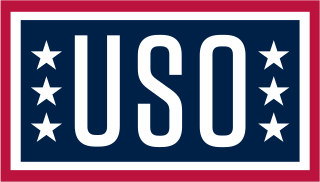
The United Service Organizations Inc. (USO) is an American nonprofit-charitable corporation that provides live entertainment, such as comedians, actors and musicians, social facilities, and other programs to members of the United States Armed Forces and their families. Since 1941, it has worked in partnership with the Department of War, and later with the Department of Defense (DoD), relying heavily on private contributions and on funds, goods, and services from various corporate and individual donors. Although it is congressionally-chartered, it is not a government agency.
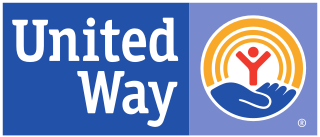
United Way is an international network of over 1,800 local nonprofit fundraising affiliates. United Way was the largest non-profit organization in the United States by donations from the public, prior to 2016.

The American Jewish Joint Distribution Committee, also known as the Joint or the JDC, is a Jewish relief organization based in New York City.

The American Theatre Wing is a New York City–based organization "dedicated to supporting excellence and education in theatre", according to its mission statement. Originally known as the Stage Women's War Relief during World War I, it later became a part of the World War II Allied Relief Fund under its current name. The ATW created and sponsors the Tony Awards in theatrical arts.
Many countries and international organizations offered the United States relief aid in the wake of Hurricane Katrina.

The disaster recovery response to Hurricane Katrina included federal government agencies such as the Federal Emergency Management Agency (FEMA), the United States Coast Guard (USCG), state and local-level agencies, federal and National Guard soldiers, non-governmental organizations, charities, and private individuals. Tens of thousands of volunteers and troops responded or were deployed to the disaster; most in the affected area but also throughout the U.S. at shelters set up in at least 19 states.

Catholic Relief Services (CRS) is the international humanitarian agency of the Catholic community in the United States. Founded in 1943 by the United States Conference of Catholic Bishops, the agency provides assistance to 130 million people in more than 110 countries and territories in Africa, Asia, Latin America, the Middle East and Eastern Europe.

The international response to the 2005 Kashmir earthquake was widespread, as many countries, international organizations and non-governmental organizations offered an abundance of relief aid to the affected regions − particularly Pakistan, which was hit the hardest due to the earthquake's epicentre being around Muzaffarabad, the capital city of Pakistani-administered Azad Jammu and Kashmir. The aid given was in the form of monetary donations and pledges, as well as relief supplies including food, various medical supplies, tents and blankets. Rescue and relief workers as well as peacekeeping troops were sent from different parts of the world to the region, bringing along rescue equipment, including helicopters and rescue dogs. The earthquake displaced some 3.3 million people, while killing around 80,000–100,000.
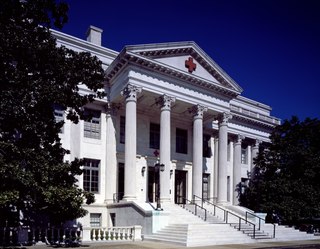
The American Red Cross (ARC), also known as The American National Red Cross, is a non-profit humanitarian organization that provides emergency assistance, disaster relief, and disaster preparedness education in the United States. It is the designated US affiliate of the International Federation of Red Cross and Red Crescent Societies and the United States movement to the International Red Cross and Red Crescent Movement.
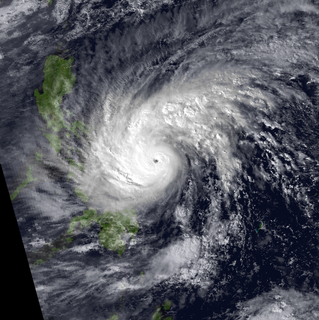
Typhoon Durian, known in the Philippines as Typhoon Reming, was a violent tropical cyclone that wreaked havoc in the Philippines in late November 2006, causing massive loss of life when mudflows from the Mayon Volcano buried many villages.
The National Armenian Relief Committee (1896) was formed out of the leadership given by the New York Armenian Relief Committee and became a loosely federated organization in response to the Hamidian massacres.

Operation USA is a non profit humanitarian organization supporting health, education and relief programs at home and abroad in order to help children and families recover and thrive in the wake of disasters. Working with grassroots community organizations, OpUSA strives to help the most overlooked and under-served communities. It is exclusively privately funded, receiving no assistance from the United States federal government. OPUSA had a revenue of over $2.6 million in fiscal year 2019, and since 1979 has delivered more than $400 million in aid to 100 countries.
United States foreign aid is "aid given by the United States to other countries to support global peace, security, and development efforts, and provide humanitarian relief during times of crisis." According to the Congressional Research Service, for fiscal year 2016, 42% was spent on long term development, 33% was spent on military and security aid, 14% was spent on humanitarian aid, and 11% was spent on political aid. Although the number of agencies and departments managing and implementing foreign assistance funds and programs can change over time, in recent years, "there are over 20 U.S. government agencies that manage foreign assistance programs." The government channels about half of its economic assistance through a specialized agency, the United States Agency for International Development (USAID).

The response to the 2010 Haiti earthquake included national governments, charitable and for-profit organizations from around the world which began coordinating humanitarian aid designed to help the Haitian people. Some countries arranged to send relief and rescue workers and humanitarian supplies directly to the earthquake damage zones, while others sought to organize national fund raising to provide monetary support for the nonprofit groups working directly in Haiti. OCHA coordinates and tracks this on a daily basis. The information is disseminated through the UN news and information portal, ReliefWeb. As of September 5, 2013, ReliefWeb have reported a total relief funding of $3.5 billion given.
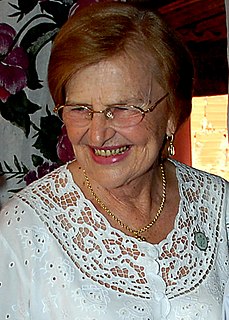
The humanitarian responses by non-governmental organizations to the 2010 Haiti earthquake included many organisations, such as international, religious, and regionally based NGOs, which immediately pledged support in the aftermath of the 2010 Haiti earthquake. Besides a large multi-contingency contribution by national governments, NGOs contributed significantly to both on-the-ground rescue efforts and external solicitation of aid for the rescue efforts.
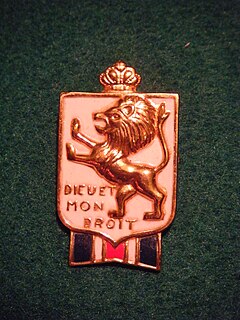
The British War Relief Society (BWRS) was a US-based humanitarian umbrella organisation dealing with the supply of non-military aid such as food, clothes, medical supplies and financial aid to people in Great Britain during the early years of the Second World War. The organisation acted as the administrative hub and central receiving depot for items donated from other charities which were then parceled out to its affiliate organizations in the US and to Britain. These donations were raised in the name of the BWRS, rather than in the name of the smaller groups.

Following the 2011 Tōhoku earthquake and tsunami, Japan received messages of condolence and offers of assistance from a range of international leaders. According to Japan's foreign ministry, 163 countries and regions, and 43 international organizations had offered assistance to Japan as of September 15, 2011. The magnitude of the earthquake was estimated at 9.1. This article is a list of charitable and humanitarian responses to the disaster from governments and non-governmental organizations. As of March 2012, donations to areas affected by the disaster totaled ¥520 billion and 930,000 people have assisted in disaster recovery efforts.
The Office of U.S. Foreign Disaster Assistance (OFDA) is an organizational unit within the United States Agency for International Development (USAID) that is charged by the President of the United States with directing and coordinating international United States government disaster assistance.
An earthquake struck Nepal at 11:56:54 NST on 25 April 2015 with a moment magnitudeof 7.8 and a maximum Mercalli intensity of IX (Violent). It was the most powerful earthquake to strike Nepal since the 1934 Nepal–Bihar earthquake. Many thousands of people died, with most casualties reported in Nepal, and adjoining areas of India, China, and Bangladesh.